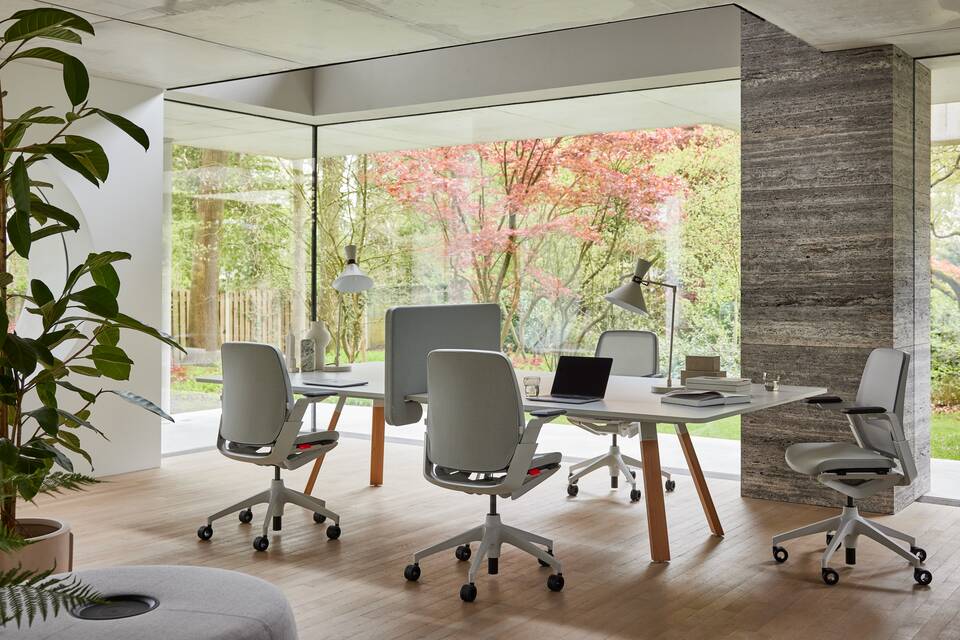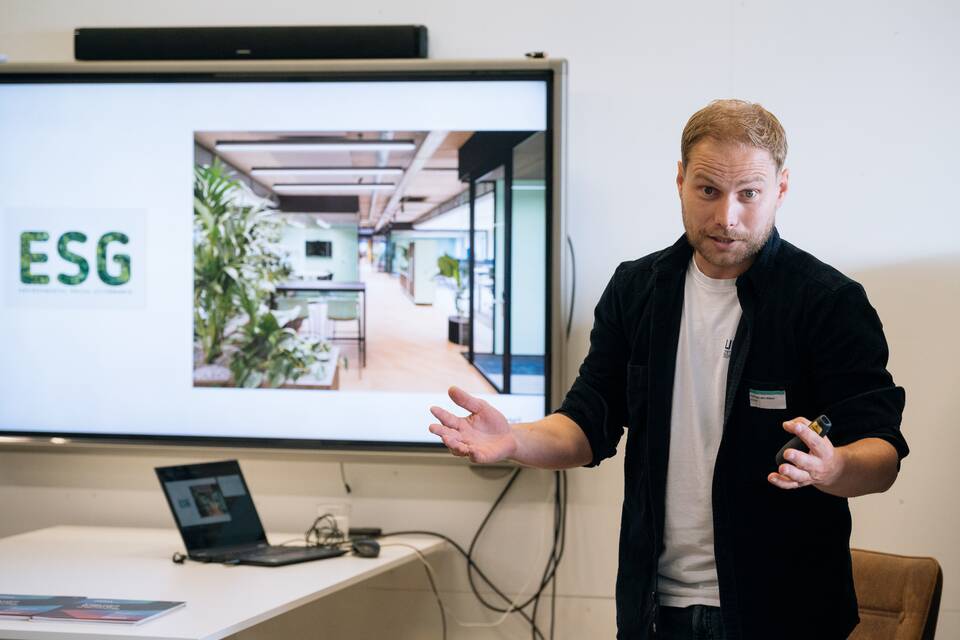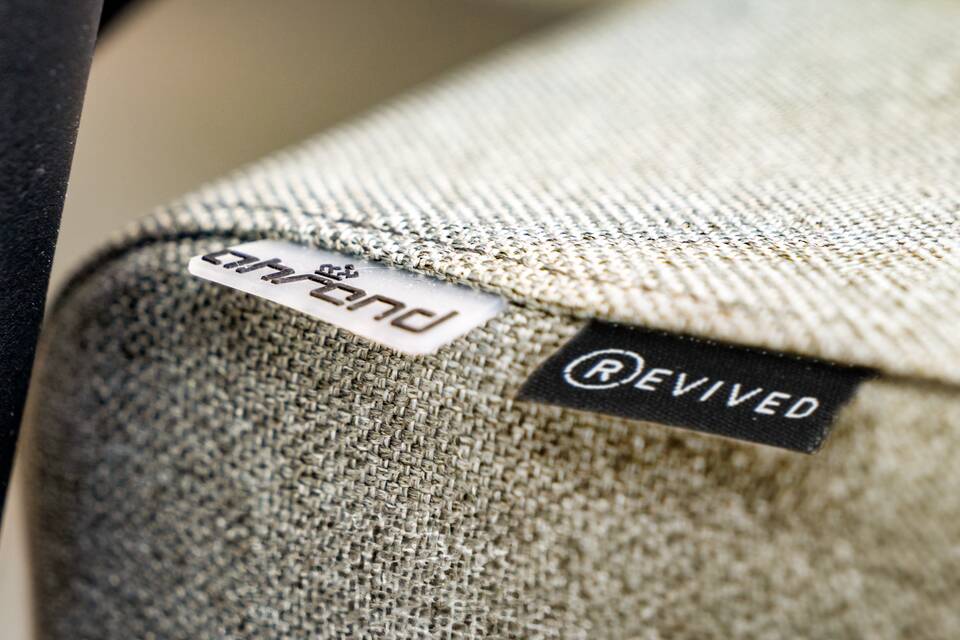Shopping cart
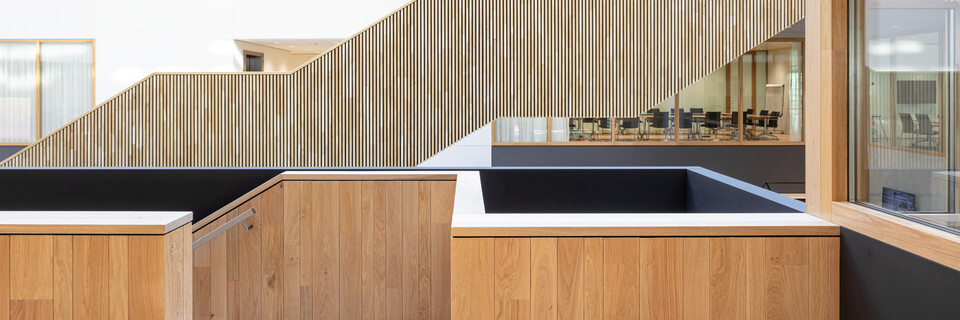
Circular collaboration: Fokkema & Partners
Patrick Levie of Fokkema & Partners Architects: "With the thousands of square meters that we design in a circular way, we make a difference."
As a pioneer with a circular business model, we have been putting the circular economy into practice with our furniture and services for a long time. In this way, we reduce the environmental impact of our business activities and that of our customers' working environment. For our circular services, we work together with external experts. This was also the case with Patrick Levie, Associate Partner at Fokkema & Partners Architects, with whom we set up Unilever's Foods Innovation Centre. Patrick gives his vision on circular services.

Innovation as a driver
"In all our designs, the users of a building or space are the starting point. Our driving force is innovation. There are 45 of us architects and engineers, and we all love to puzzle, discover, and figure things out. A development such as the circular philosophy – which has taken off in recent years – is what we are going for! How does it affect the work environment and how do we adapt our designs accordingly? That's what makes our work so interesting. Previously, sustainability mainly concerned labels for energy consumption, installations and materials, for example. Circularity is really different. This is about whether you can reuse what is already there."
‘Circularity is about making use of what is already there.’
Circularity requires a different way of thinking
"The basis of the circular philosophy is to limit the use of raw materials. And to use everything that is already there as well as possible, without adding new. This requires a different way of thinking. Also when it comes to aesthetics. In the project for Unilever's Foods Innovation Centre in Wageningen – on which we collaborated with Ahrend – we had to deal with a colourful mix of chairs: orange, yellow, green, purple, all mixed together. You would never buy it new.
Reuse forces you to come up with creative solutions. For example, we clustered the chairs by color and thus created 'spots' in the room. Each zone was given its own identity as part of the office environment. At the offices of Nationale Nederlanden in The Hague and Rotterdam – a working environment of about 36,000 square meters – we made circularity very concrete and visible. We attached labels to the reused products with texts such as: 'Do you still recognize me? I was an old locker door." Or – with slatted structures made of untreated wood as key design element used throughout this project: 'I am 100% modular and will be given a new purpose after my time.'
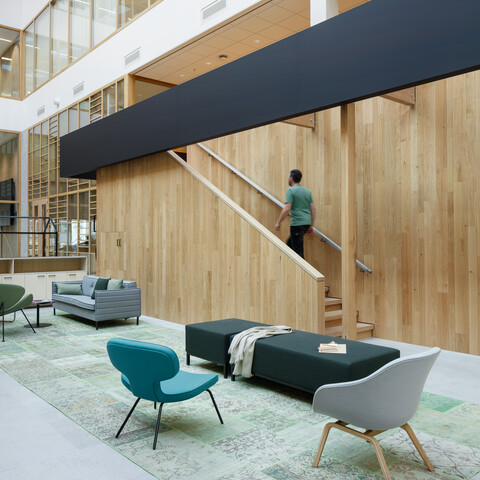
INFINITY workplace
"Whereas at Nationale Nederlanden we consciously chose to make circularity visible, we emphasise its beauty in our project for ABN AMRO. Reuse or second-hand sometimes has the association of makeshift or uncommon. At the redeveloped ABN AMRO building in the Bijlmer – with around 100,000 square metres of office space – we show the beauty of circularity. We do this with the INFINITY workplace concept specially developed for the bank – in which everything is reused and can be reused endlessly. And yet it looks like new."
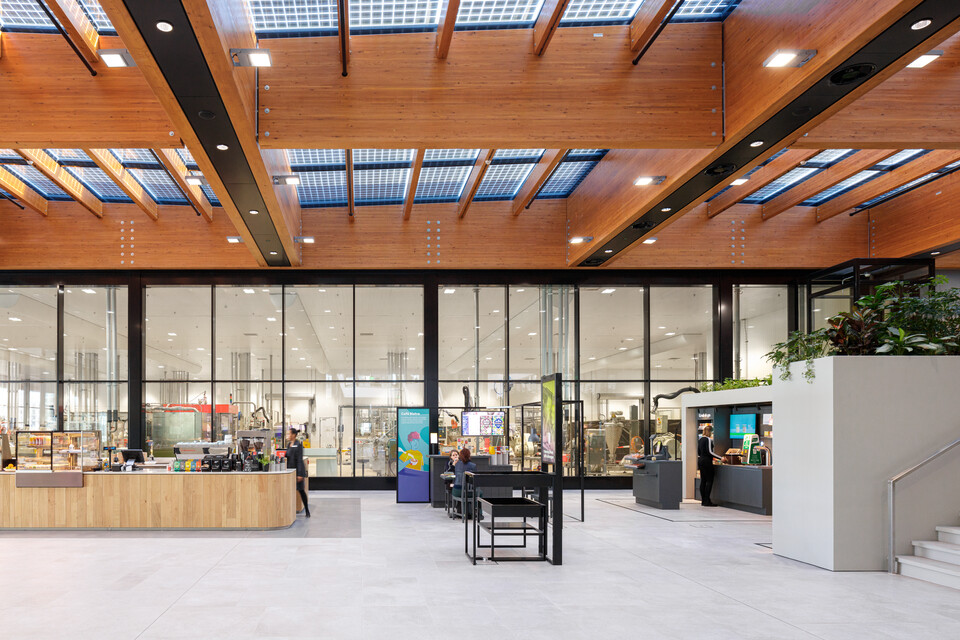
Making a difference
"With the thousands of square meters of working environment that we set up every year, we can really make a difference. By opting for circular solutions, we save raw materials and reduce waste. In our projects, we therefore always bring our circular knowledge to the table with clients. And we emphasize that reuse can be just as beautiful as new, if it is used in a smart way. In the Netherlands, we see that reuse is becoming more and more common. In Germany, where we are doing more and more projects, we notice that it is not yet top of mind . By explaining and showing circular projects, we try to get clients on board. And that is getting better and better!"
‘With the thousands of square meters of working environment that we furnish every year, we can really make a difference.’
Environmental cost indicator
"We believe that the ideal working environment is 100% circular and zero-waste. There are various methods to measure how sustainable an interior is. In our projects for ABN AMRO and Nationale Nederlanden, we used the environmental cost indicator, the ECI. It shows – in euros – the environmental impact of new compared to circular products. The MCI takes into account all factors from the entire supply chain. Think of production, use of raw materials, waste, transport. The better you score, the better you can demonstrate that your impact on the environment is limited."
Measuring sustainability
You can measure how sustainable a product is by the environmental impact of the material use and the value after the end of its life. There are several instruments for this:
- The ECI shows the environmental impact (in euros) of new compared to circular.
- An EPD or environmental product declaration shows the environmental impact of products during the different stages of their life.
- A carbon footprint calculator calculates the CO2 emissions of projects.
- The detachability index shows the joining method of materials.
Reuse as much as possible
"The best way to contribute to a circular future with your interior is one-to-one reuse. So reuse what you have at home. That is the basis of our projects. If that is not possible, we will look for what is already there somewhere else. There are warehouses full of stuff in the Netherlands. And suppliers who can supply recycled glass, partitions or floors, for example. And take Ahrend's Circular Hub, where a large stock of refurbished furniture is available. Only if there is nothing suitable for our projects, we choose new. But new with as little environmental impact as possible. For example, we opt for bio-based materials and exclude materials with toxic substances and high environmental impact."
From specification to preconditions
"To give substance to our designs, we need the right, circular partners. Like Ahrend. The way we work with our partners has changed. About eight years ago, we gave a detailed specification containing, for example, the number of chairs, the color of wood, color of fabric, type of armrests. We have moved away from that. We now only provide preconditions. For example, an ergonomic chair on wheels – and we give a picture of how we have it in our heads. Ahrend will then look – including in the Circular Hub – for existing products that fit within those preconditions. In this way, we make much better use of what is already there."
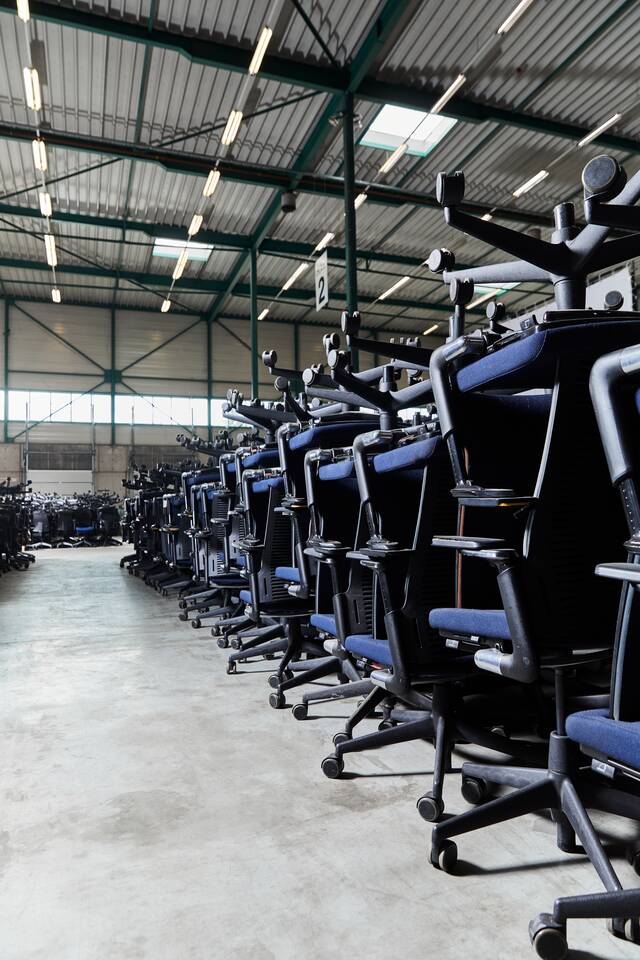

Unilever Foods Innovation Centre
"A good example of a circular project in which Ahrend and we worked together is Unilever's Foods Innovation Centre in Wageningen. It is one of the most sustainable buildings in the world and has been given an almost completely circular design. We reused most of the furniture from three European branches that were closing one-to-one. Ahrend took care of the logistics, the inventory and the control. For example, they checked the condition of the furniture and whether it needed to be cleaned or converted. And they brought the furniture in line with the color plan for the different floors. This allowed us to put together almost the entire interior, about 95%, from their own reused furniture.
What was not in the house were, for example, lounge sofas. Ahrend found these for us on the basis of a look-and-feel book , for example at organisations that no longer needed them. A small part of the furniture had to be renewed. Ahrend provided circular or bio-based furniture, such as chairs with a hemp-made shell."
‘Most of the furniture for the Unilever Foods Innovation Centre is its own repurposed furniture.’
Office as a business card
"In every project, we bring our extensive experience with and knowledge of BREEAM and WELL projects to the table. This way, our clients can count on the most sustainable design possible. This is not only important for their customers and visitors. But certainly also for – future – employees now that companies are dealing with the war for talent. Because if you want to attract the new generation, you have to have a credible sustainable story. A sustainably furnished office that looks beautiful and where people feel good is the calling card for every organization."
‘A sustainably furnished office where people feel good is the calling card for every organization.’
Materials library
"In the field of circularity, you can innovate endlessly. Many product suppliers are working on it. And our own materials team is constantly on the hunt for innovative, bio-based materials and applications. At ABN AMRO, for example, we incorporated some of the corporate clothing into the counter tops of the pantries. We also reuse material that we 'harvest' from ABN AMRO buildings, such as old ceiling grilles. In addition, we used Unilin to make interior walls from recovered wood, without using adhesive joints. The material can thus be reused over and over again without compromising on quality. In our office, we have a materials library that we update non-stop based on the innovations of all our suppliers. We draw on this library for applications in our interior concepts. All with the aim of creating as many circular working environments as possible."
Tip!
"Appreciate the stuff you already have and give them a second chance!"
